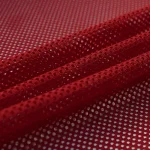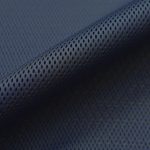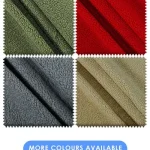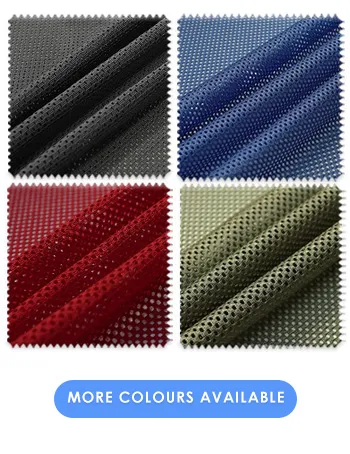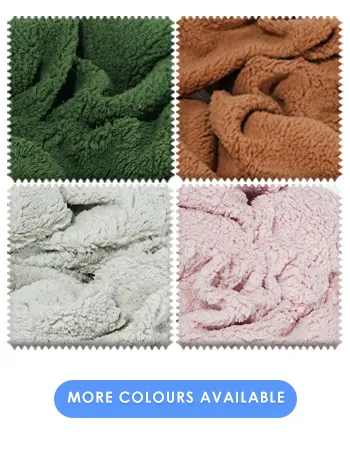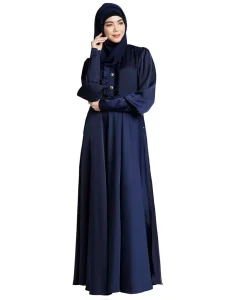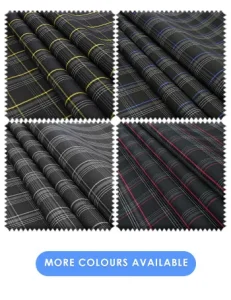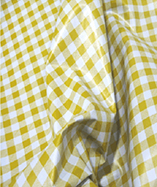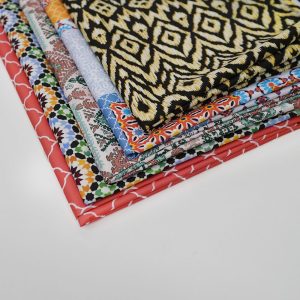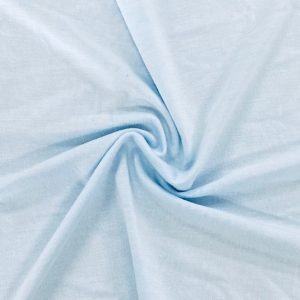Understanding Fabric Weight in Order to Choose the Right Fabric
Fabric weight is the outcome of how a fabric has been woven, its finish and sometimes the fibre type. Looking at the weight can help you to decide if it will be the most suitable fabric for its end use.
GSM and OZ
GSM is a metric measurement meaning grams per square metre- it is how much 1 square metre of fabric weighs and the higher the GSM number the denser the fabric will be. Ounce per square yard (oz/sq2) is the imperial measurement which is also commonly used. A lightweight fabric is typically between 30- 150 GSM, medium weight 150-350 GSM and heavyweight 350+ GSM, such as our clear window PVC (640 GSM), although this can vary depending on the type of fabric.
These fabrics generally fall into these categories:
- Lightweight fabrics: chiffon, linen, organza, cheesecloth, lace, voile, mesh, habutai.
- Medium weight fabrics: sateen, oxford, velvet, taffeta and charmeuse.
- Heavy weight fabrics: upholstery fabric, canvas, brocade, poplin, denim and peau de soie.
How fabric weight affects application
Fabric thickness
The heavier the weight, generally the thicker the fabric will be, although bear in mind that the weight does not tell you how thick the fabric is. Fabrics with different fibres or weaves but with the same weight may not have the exact same thickness.
Fabric quality
The weight of a material does not always determine its quality. Different fabric weaves and yarns will be different weights which is essential for its end use. For example, denim is heavyweight because of its twill weave and cotton fibre which is useful for hardwearing jeans, whereas chiffon is very lightweight as it is a loosely woven, plain weave making it ideal for floaty dresses.
Choosing the right fabric
The weight of a fabric is particularly important when having to choose between two similar fabrics which are of different weights. If the fabric of one cotton t-shirt has a higher GSM than the fabric of another cotton t-shirt, then it is likely to be more hard wearing. Choosing the weight of a particular fabric will depend on how often it is going to be worn or used and what its purpose will be, for example, lightweight denim is suitable for a shirt and a heavier denim for jeans.
Weather conditions
It should also be taken into account that lightweight fabrics will be more appropriate for hotter temperatures. In addition, they usually have a better drape which in some cases means an interfacing will need to be applied to the back of the fabric to provide more structure, whereas heavier fabrics may not need backing.
Fabric comfort
Another factor to consider is comfort especially with fabrics such as denim for the reason being that heavier denim fabrics will be much denser and sturdier. This means they will be durable for a lot longer. However until worn in the stiffness of the fabric can make the garment difficult to put on and can be more uncomfortable to move in than the lighter weight denim, therefore a compromise of a mid-weight denim fabric (about 12oz) is often a suitable option.
Typical fabric weights and uses
- Lightweight fabrics are suitable for underwear and summer items such as dresses and shirts. A lightweight t-shirt fabric will be about 5.3 oz, a standard weight 5.5 oz and a heavier t-shirt 6-7 oz.
- Fabrics classed as ‘upholstery’ fabrics are heavyweight and are known to be stronger than other textile materials. They are suitable for cushion and furniture coverings and can be used for curtains but should not to be used for anything requiring intricate effects such as gathering because the fabric will be too thick and stiff. Thin curtain fabrics have a GSM of around 140. The heavier the material is, the denser it will be which means it will block out more light and insulate the room better.
- Wool is a luxurious warm fibre often used for tailoring. Three season wool is suitable for autumn/ winter and spring and weighs about 10- 12oz. For very cold countries you can get heavier winter wool which can weigh as heavy as 600 GSM. Wool can also be woven specially to make it into a much cooler, lighter fabric for hotter countries.
Fabric weight Chart
Buy quilted fabrics from UK’s Best Quilted Fabrics Shop
Fabric UK is your destination for all types of fabric. Whether you’re searching for fabric samples or purchasing by the meter, we make it easy to find exactly what you need.
You can order: Samples, Wholesale, Fabric by the meter
Fill Form for Free fabric samplesSimply visit our website at fabricuk.com or call us directly at 0121 359 2349 for any questions or inquiries.
Visit Our Fabric Showroom
Feel free to visit our fabric showroom anytime – no appointment is necessary!
KBT LTD, Carlton Business Centre, 132 Saltley Road, Birmingham, B7 4TH, United Kingdom
Email Us:
You can reach us at: info@fabricuk.com
Showroom Hours:
- Monday – Friday: 9:30 am – 6:00 pm
- Saturday: 10:00 am – 5:00 pm




